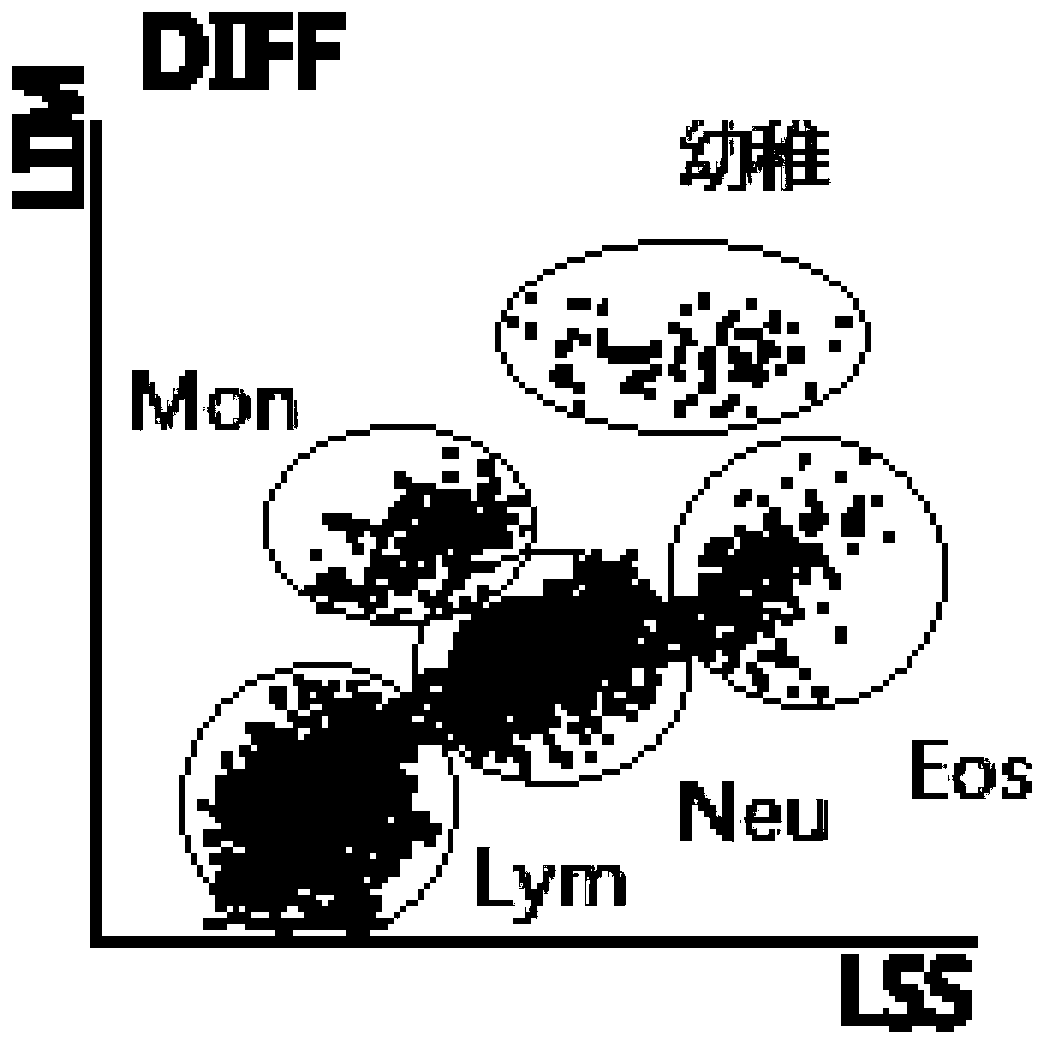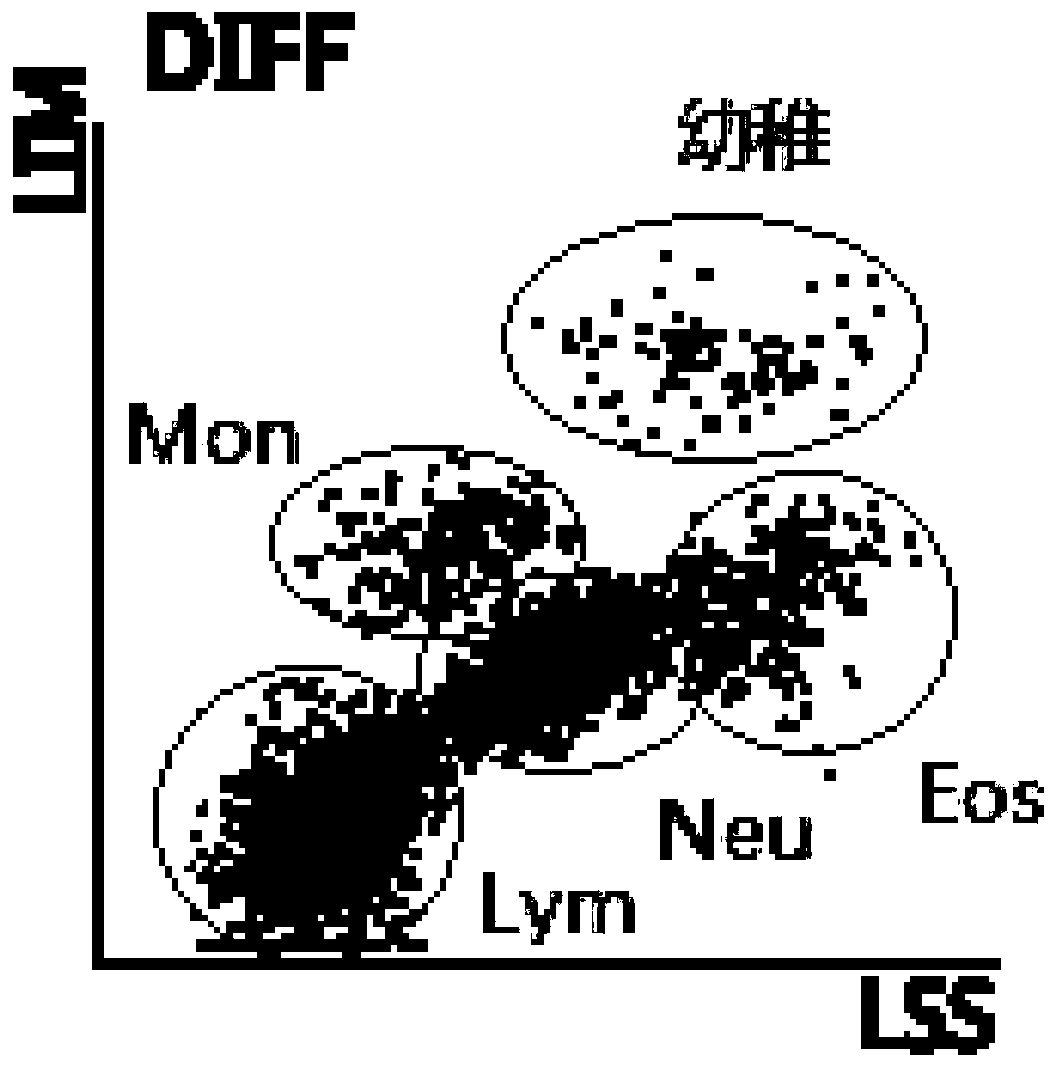White blood cell classification reagent and method
A white blood cell classification and reagent technology, applied in the field of blood analysis, can solve the problems of dependence on imports, high use costs, and inability to meet the normal use of small and medium-sized hospitals in a timely manner, so as to avoid misdiagnosis, improve accuracy, and simple and easy measurement methods.
- Summary
- Abstract
- Description
- Claims
- Application Information
AI Technical Summary
Problems solved by technology
Method used
Image
Examples
Embodiment 1
[0057]
[0058] Adjust the pH to 6.0 and the osmotic pressure to 800mOsm / kg with the reagents configured according to the above formula.
[0059] Under the condition that the temperature was kept at 35° C., 0.7 mL of the above reagent was added to 20 μL of blood sample containing immature leukocytes. Detection of leukocytes by electrical impedance and laser detection was started after 20 seconds of mixing. The volume information of white blood cells is measured by electrical impedance method, and the complexity characteristic information of white blood cells is measured by high-angle laser scattered light with a measuring angle of 8-20 degrees.
[0060] The result is as figure 1 As shown, Neu indicates neutrophils (plus basophils), Lym indicates lymphocytes, Mon indicates monocytes, Eos indicates eosinophils, and Naive indicates immature leukocytes. White blood cells are divided into five types: neutrophils (plus basophils), lymphocytes, monocytes, eosinophils, and immatu...
Embodiment 2
[0062]
[0063] Adjust the pH to 7.0 and the osmotic pressure to 1000mOsm / kg with the reagents configured according to the above formula.
[0064] Adopt embodiment 1 method to detect the leukocyte in the blood sample, the result is as follows figure 2 shown. The results showed that white blood cells were divided into five categories: neutrophils (plus basophils), lymphocytes, monocytes, eosinophils, and immature leukocytes, among which immature leukocytes were grouped separately with clear boundaries.
Embodiment 3
[0066]
[0067] Adjust the pH to 8.0 and the osmotic pressure to 850mOsm / kg with the reagent configured above.
[0068] Adopt embodiment 1 method to detect the leukocyte in the blood sample, the result is as follows image 3 shown. The results showed that white blood cells were divided into five categories: neutrophils (plus basophils), lymphocytes, monocytes, eosinophils, and immature leukocytes, among which immature leukocytes were grouped separately with clear boundaries.
PUM
| Property | Measurement | Unit |
|---|---|---|
| Osmotic pressure | aaaaa | aaaaa |
Abstract
Description
Claims
Application Information
 Login to View More
Login to View More - R&D
- Intellectual Property
- Life Sciences
- Materials
- Tech Scout
- Unparalleled Data Quality
- Higher Quality Content
- 60% Fewer Hallucinations
Browse by: Latest US Patents, China's latest patents, Technical Efficacy Thesaurus, Application Domain, Technology Topic, Popular Technical Reports.
© 2025 PatSnap. All rights reserved.Legal|Privacy policy|Modern Slavery Act Transparency Statement|Sitemap|About US| Contact US: help@patsnap.com



